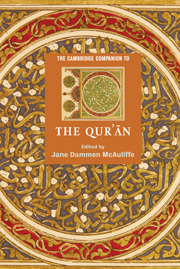Introduction
Published online by Cambridge University Press: 28 March 2007
Summary
According to a thirteenth-century compilation of qurānic knowledge - a medieval 'companion to the Qur'ān' - the Arabic Qur'ān contains 323,015 letters, 77,439 words, more than 6,000 verses and 114 chapters or sūras. This makes it a rather modestly sized text when contrasted with the Upanishads, the Mahabharata and the Pali canon of Buddhist writings. But why would these titles come immediately to mind as the point of comparison? The quick answer to that question lies in their classification as 'scripture' or 'sacred text' or 'holy writ' or 'divine word' or even 'classics'. These works, and many others that could be added, found their place in the late nineteenth-century publishing project known as The sacred books of the East. That project itself marked an important moment in the conceptual expansion of such categorisation. For centuries, the English term 'scripture', and its equivalents in European languages, had been virtually synonymous with the Bible. While it was recognised, particularly by Christian apologists and missionaries, that other texts were revered by their respective religious communities, that recognition was usually negative and antagonistic.
- Type
- Chapter
- Information
- The Cambridge Companion to the Qur'ān , pp. 1 - 20Publisher: Cambridge University PressPrint publication year: 2006
- 1
- Cited by



